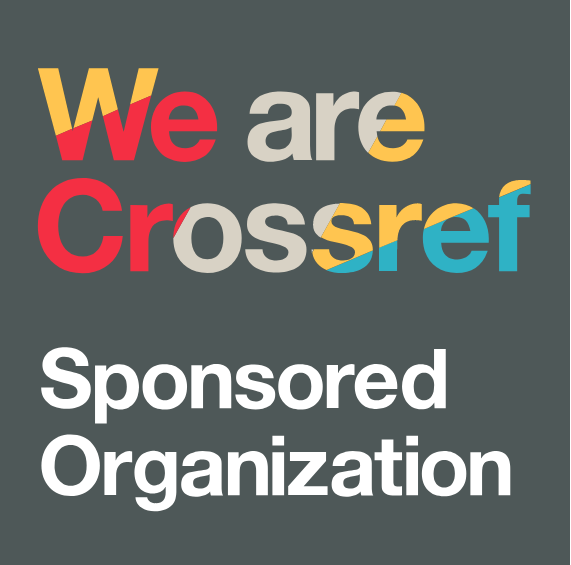The Influence of Virtual Lab, Gamification, and Augmented Reality on Students' Understanding of Microbiology Concepts
DOI:
https://doi.org/10.38035/sijet.v2i3.182Keywords:
Virtual Lab, Gamification, Augmented Reality, Microbiology, Conceptual UnderstandingAbstract
This article is a literature study that aims to examine the effect of the use of Virtual Lab, Gamification, and Augmented Reality (AR) on students' understanding of microbiology concepts. Along with the development of technology in the world of education, conventional learning methods have undergone significant transformations. Virtual Lab allows microbiology practicums to be carried out simulatively, Gamification encourages learning motivation through game elements, and AR visualizes complex microbiology objects interactively. This study collects and analyzes the results of previous studies that are relevant in the context of higher education. The results of the study show that the three technological approaches are generally able to improve students' understanding of microbiology concepts, increase interest in learning, and strengthen critical thinking skills. However, the success of its implementation is highly dependent on the readiness of the institution, the competence of lecturers, and the characteristics of students.
References
Ali, H., & Mappesona, H. (2016). Build brand image: Analysis Service Quality and Product Quality (case study at Giant Citra Raya). International Journal of Economic Research.
Ali, H., & Nugroho, F. (2022). Determinasi SIMRS: Hardware, Software Dan Brainware (Literature Review Executive Support Sistem (ESS) For Business). Jurnal Manajemen Pendidikan dan Ilmu Sosial, 3(1), 254–265.
Ali, H., Evi, N., & Nurmahdi, A. (2018). The Influence of Service Quality , Brand Image and Promotion on Purchase Decision at MCU Eka Hospital. Business and Management Studies. https://doi.org/10.21276/sjbms.2018.3.1.12
Ali, H., Limakrisna, N., & Jamaluddin, S. (2016). Model of customer satisfaction: The empirical study at Bri in Jambi. International Journal of Applied Business and Economic Research.
Ali, H., Narulita, E., & Nurmahdi, A. (2018). Saudi Journal of Business and Management Studies ( SJBMS ) The Influence of Service Quality , Brand Image and Promotion on Purchase Decision at MCU Eka Hospital. Business and Management Studies. https://doi.org/10.21276/sjbms.2018.3.1.12
Ali, H., Zainal, V. R., & Ilhamalimy, R. R. (2022). Determination of Purchase Decisions and Customer Satisfaction: Analysis of Brand Image and Service Quality (Review Literature of Marketing Management). Dinasti International Journal of Digital Business Management, 3(1), 141–153. https://doi.org/10.31933/dijdbm.v3i1.1100
Bacca, J., Baldiris, S., Fabregat, R., Graf, S., & Kinshuk. (2014). Augmented reality trends in education: A systematic review of research and applications. Educational Technology & Society, 17(4), 133–149. https://www.jstor.org/stable/jeductechsoci.17.4.133
Deterding, S., Dixon, D., Khaled, R., & Nacke, L. (2011). From game design elements to gamefulness: Defining “gamification”. In Proceedings of the 15th International Academic MindTrek Conference: Envisioning Future Media Environments (pp. 9–15). https://doi.org/10.1145/2181037.2181040
Dewi, P. M., & Nuraini, R. (2023). Simulation-based learning for biosafety awareness among microbiology students: A case study. Indonesian Journal of Science Education, 7(1), 45–52.
Djojo, A., & Ali, H. (2012). Information technology service performance and client’s relationship to increase banking image and its influence on deposits customer banks loyalty (A survey of Banking in Jambi). Archives Des Sciences, 65(8), 65–76.
Domínguez, A., Saenz-de-Navarrete, J., de-Marcos, L., Fernández-Sanz, L., Pagés, C., & Martínez-Herráiz, J. J. (2013). Gamifying learning experiences: Practical implications and outcomes. Computers & Education, 63, 380–392. https://doi.org/10.1016/j.compedu.2012.12.020
Hidayat, M., & Cahyono, A. (2021). Augmented reality untuk pembelajaran struktur sel mikroba. Jurnal Teknologi Pendidikan Biologi, 5(2), 103–111.
Ibáñez, M. B., & Delgado-Kloos, C. (2018). Augmented reality for STEM learning: A systematic review. Computers & Education, 123, 109–123. https://doi.org/10.1016/j.compedu.2018.05.002
Iskandar, D., & Rachmawati, Y. (2021). Perbedaan gaya belajar mahasiswa dan pengaruhnya terhadap efektivitas media AR dalam biologi. Jurnal Inovasi Pendidikan IPA, 7(3), 205–214.
Klymkowsky, M. W., & Garvin-Doxas, K. (2008). Recognizing student misconceptions through Ed's Tools and the Biology Concept Inventory. PLoS Biology, 6(1), e3. https://doi.org/10.1371/journal.pbio.0060003
M, A., & Ali, H. (2017). Model Kepuasan Pelanggan: Analisis Kualitas Produk Dan Kualitas Layanan Terhadap Citra Merek Pada Giant Citra Raya Jakarta. Jurnal Manajemen. https://doi.org/10.24912/jm.v21i3.254
Makransky, G., & Mayer, R. E. (2022). Benefits of taking a virtual field trip in immersive virtual reality: Evidence for the immersive virtual field trip hypothesis. Journal of Educational Psychology, 114(4), 709–726. https://doi.org/10.1037/edu0000701
Makransky, G., Terkildsen, T. S., & Mayer, R. E. (2019). Adding immersive virtual reality to a science lab simulation causes more presence but less learning. Learning and Instruction, 60, 225–236. https://doi.org/10.1016/j.learninstruct.2017.12.007
Mulyani, N., & Fauzan, R. (2021). Pengaruh gamifikasi terhadap peningkatan motivasi belajar mahasiswa dalam pembelajaran biologi. Jurnal Pendidikan Sains, 9(2), 98–105.
Novansa, H., & Ali, H. (2017). Purchase Decision Model: Analysis of Brand Image, Brand Awareness and Price (Case Study SMECO Indonesia SME products). Saudi Journal of Humanities and Social Sciences. https://doi.org/10.21276/sjhss
Prabowo, R., & Safitri, L. (2022). Kebijakan institusi pendidikan dalam mendukung pembelajaran berbasis teknologi digital. Jurnal Administrasi Pendidikan, 10(1), 77–86.
Prensky, M. (2010). Teaching digital natives: Partnering for real learning. Corwin Press.
Putri, A., & Wibowo, H. (2023). Efektivitas Virtual Laboratory dalam pembelajaran mikrobiologi untuk mahasiswa pendidikan biologi. Jurnal Biologi dan Pembelajarannya, 10(1), 34–42.
Rahmawati, D., & Huda, M. (2022). Pemanfaatan gamifikasi dalam meningkatkan interaktivitas pembelajaran mikrobiologi. Jurnal Inovasi Pendidikan IPA, 8(1), 59–66.
Ramadhani, T., & Suprapto, Y. (2020). Augmented reality dalam pembelajaran struktur sel mikroorganisme. Jurnal Teknologi Informasi dan Pendidikan, 13(2), 88–95.
Rutten, N., van Joolingen, W. R., & van der Veen, J. T. (2012). The learning effects of computer simulations in science education. Computers & Education, 58(1), 136–153. https://doi.org/10.1016/j.compedu.2011.07.017
Santoso, B., & Amelia, T. (2023). Pembelajaran berbasis tim menggunakan media digital dalam mata kuliah mikrobiologi. Jurnal Pendidikan Biologi Indonesia, 9(1), 112–120.
Sari, M. P., & Handayani, L. (2021). Perbandingan efektivitas pembelajaran konvensional dan berbasis virtual lab pada mata kuliah mikrobiologi. Jurnal Bioteknologi dan Sains, 6(2), 70–78.
Sitio, T., & Ali, H. (2019). Patient Satisfaction Model and Patient Loyalty: Analysis of Service Quality and Facility (Case Study at Rawamangun Special Surgery Hospital). Scholars Bulletin. https://doi.org/10.36348/sb.2019.v05i10.002.
Wu, H. K., Lee, S. W. Y., Chang, H. Y., & Liang, J. C. (2020). Current developments in computer-based simulations and their implications for teaching and learning in science. International Journal of Science Education, 32(9), 1227–1248. https://doi.org/10.1080/09500690903503096
Wulandari, S., & Hasan, A. (2023). Penerapan teknologi augmented reality dalam pendidikan tinggi: Studi kasus mahasiswa biologi. Jurnal Teknologi dan Pendidikan, 8(1), 12–20.
Downloads
Published
How to Cite
Issue
Section
License
Copyright (c) 2025 Yorasakhi Ananta

This work is licensed under a Creative Commons Attribution 4.0 International License.
Copyright :
Authors who publish their manuscripts in this journal agree to the following conditions:
- Copyright in each article belongs to the author.
- The author acknowledges that the Siber International Journal of Education Technology (SIJET) has the right to be the first to publish under a Creative Commons Attribution 4.0 International license (Attribution 4.0 International CC BY 4.0).
- Authors can submit articles separately, arrange the non-exclusive distribution of manuscripts that have been published in this journal to other versions (for example, sent to the author's institutional repository, publication in a book, etc.), by acknowledging that the manuscript has been published for the first time at Siber International Journal of Education Technology (SIJET).























